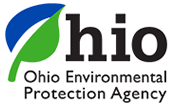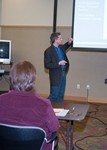In an earlier article I summarized the responsibilities of a hazardous waste generator for the completion and distribution of the Uniform Hazardous Waste Manifest (Manifest). Read: Use and Distribution of the Uniform Hazardous Waste Manifest. That article dealt only with the Federal regulations of the U.S. Environmental Protection Agency (EPA). In this article – and those that follow – I will detail the requirements of individual states regarding the distribution of the Manifest. Since the regulations of a state with an authorized hazardous waste program must be at least as strict as those of the EPA and can be more strict (state regulations can’t be less strict than Federal regulations), state regulations may require more than those of the EPA.
In this article: Ohio!
Ohio Environmental Protection Agency (Ohio EPA).
Manifest copy distribution in Ohio:
- Page 1 (top copy): “Designated facility to destination State (if required)”.
- Page 2: “Designated facility to generator State (if required)”.
- Page 3: “Designated facility to generator”.
- Page 4: “Designated Facility’s copy”.
- Page 5: “Transporter’s copy”.
- Page 6 (bottom copy): “Generator’s initial copy”
State requirements to modify the EPA-required manifest copy distribution outlined above:
None. The Ohio EPA does not require the designated facility to submit copies to it no matter if the designated facility is within Ohio (page 1) or out-of-state (page 2). Pages 1 and 2 are not required to be used by either EPA or Ohio EPA and therefore will likely be retained or destroyed by the designated facility.
Additional state requirements for the management of the uniform hazardous waste manifest:
None. Ohio EPA follows the Federal rule for the Exception Report. And, Ohio EPA also follows the Federal rule for the Waste Minimization Certification.
Contact me with any questions you may have about the generation, identification, management, and disposal of hazardous waste Daniels Training Services, Inc. 815.821.1550 |



